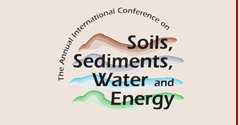Article Title
Abstract
Oil spill modeling was performed using the “type A” (simplified, with a minimum of field data requirements) modeling approach and SIMAP (Spill Impact Model Analysis Package) to assess marine biological injuries and natural resource damages (NRD) for 23 spill cases identified by Florida Department of Environmental Protection (DEP). The objectives were to provide (1) an assessment of the pathways and fate of the oil, and thus, estimate exposure to the water surface, shoreline and other habitats, water column, and sediments; and (2) estimates of injuries to wildlife, aquatic organisms, and habitats that were used to scale compensatory restoration. Compensatory habitat restoration for all quantifiable wildlife, fish and invertebrate injuries was scaled using Habitat Equivalency Analysis (HEA) and wetland habitat creation as mitigation. However, this is not a direct method of increasing sea turtle production. Therefore, scaling was performed to estimate the number of hatchlings needed to compensate for the sea turtle injuries. DEP then successfully submitted claims for NRD to the US Coast Guard Oil Pollution Fund.
Recommended Citation
Rowe, Jill; McCay, Deborah French; and Whittier, Nicole
(2010)
"Estimation Of Natural Resource Damages For 23 Florida Cases Using Physical Fates And Biological Modeling,"
Proceedings of the Annual International Conference on Soils, Sediments, Water and Energy: Vol. 12, Article 34.
Available at:
https://scholarworks.umass.edu/soilsproceedings/vol12/iss1/34
